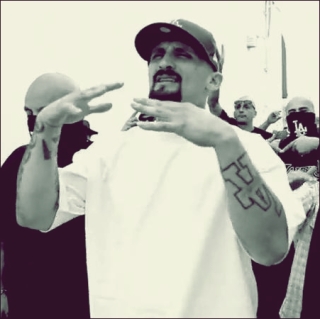Compton/Kollay
WCL Founder


Posts : 3340
Location : Los Santos
 | |
Rick
Legend


Posts : 865
 |  Subject: Re: ..:: Los Santos Police Department Manual & Codes ::.. Subject: Re: ..:: Los Santos Police Department Manual & Codes ::..  Mon Oct 03, 2011 6:52 pm Mon Oct 03, 2011 6:52 pm | |
| - Basic Work Manual - Hierarchy
The LSPD has a strict hierarchy they follow and go by. Every member has a rank he represents. In order to get a higher rank, he must get promoted depending on his time served inside the force and work qualities he has. Every higher rank has more permissions and control over lower ranks. The LSPD ranks from lower to highest are Police Officer I, Police Officer II, Senior Lead Officer, Sergeant, Lieutenant, Captain, Commander and Chief of Police. Ranks from Police Officer I to Sergeant, are lower to medium ranks, composed of field officers. Ranks from Lieutenant and above are administrative ranks, forming the 'High Command', taking any decisions for the current state and future of the LSPD. The Detective and Senior Detective ranks are part of the CID. To join a division, you must be rank Police Officer II or have permission as Police Officer I from the head of the division (unless overruled by Commander or Chief). When an incident or situation occurs, the highest rank on-scene takes the control of it.
Equipment
As a police officer, you receive and are obligated to carry equipment consisted of a pistol, taser gun, nightstick, pepper spray, hand cuffs and keys, flashlight, radio transceiver, badge, law identification document and a ticket book. Inside your police cruiser you have a police radio, cruiser camera, first aid medical kit, mechanic tools, photo-camera, basic forensic equipment and a megaphone. Every on duty police officer must wear an uniform, unless permitted otherwise. SWAT officers carry heavy damage weapons and special equipment when performing their duties they are called in for.
Frisking
You have the legal right and permission to frisk a person or his property, only if you have a reasonable suspicion or a warrant. Reasonable suspicion is when circumstances lead you to think that the person is involved in a criminal activity. Such reasons most often include when a person acts strangely, or is emotional, angry, fearful, or intoxicated ; or when a person matches a wanted suspect description ; or when a person is present at a crime scene ; or when a person knowingly tries to evade from you ; or when a person does not fit the place and time of the location. You have the full right to frisk and search a person and his property when you witness or posses valid evidence that he committed a crime. Warrants are another way to arrest a person and frisk him or his property. They are worked out by rank Captain or higher with the cooperation of a city law judge. You are also permitted to freely detain a person for a short period of time, but not frisk him if criteria for it are not met.
Using force
There are two types of force, which police officers use - non-lethal force and lethal force. Non-lethal force is used when a suspect is serving a threat by his actions and needs to be placed under control. These actions most often include using physical actions against a person or officer ; holding a melee weapon ; attempting to evade the officer ; attempting to assault a person or officer unarmed ; or refusing to obey a lawful order for security reasons. This type of force includes using physical actions, taser gun, nightstick and pepper spray to "take down" or restrain the suspect. Lethal force is used in life danger situations, it includes using force, which can cause serious injuries or death to the person. It is used when a person is endangering other lives by his actions, most often including holding or firing a weapon or is in the process of attacking and assaulting a person or officer with a dangerous melee weapon.
Performing an arrest
When you engage in an arrest, you have a strict procedure to follow when doing so. You must be in a position which doesn't endanger your life and be aware at all times, ready to use any type of force. If the suspect is not visibly resisting, order him to step against an object or get on the ground, by your judgment. If you believe the suspect may posses a threat, you must withdraw and point the taser gun towards him. If a serious or dangerous threat, your handgun. When a suspect is refusing to obey your orders and physically resists the arrest, you may use non-lethal force, such as physically restraining him or using your taser gun, nightstick or pepper spray. When you gain control over the suspect, you must hand cuff him with his hands behind his back. After which, frisk him completely, and confiscate any possible concealed weapons or evidence. Search him for any personal documents also. In each arrest, you must read the suspect his Miranda rights. These rights go by the words of.
- Code:
-
You have the right to remain silent, anything you say can and will be used against you in a court of law. You have the right to speak to an attorney and one to be present during your questioning. If you cannot afford one, one will be provided for you at government cost. After which, take him to the police vehicle and place him inside. From now on, his transportation to the police station is your responsibility to care for. If the suspect had a vehicle in use, you must frisk it and confiscate any possible weapons and evidence. When you arrive at the police station, take the suspect to the jail cells where he will be processed further. You must question him if there are any unsolved points involved in the case. Suspect confessions are vital, when you do not posses enough evidence that he committed a crime. The suspect has the right for one phone call and a lawyer (if available).
Pullover and stop
When pulling over a vehicle, you must always stop your police vehicle behind it, in a good positions, so both cars won't block and prevent traffic movement. Park your car, always slightly more on the left of the one in front of you, so the side will provide you cover. After which, step out of your vehicle and head towards the car. You must be aware at all times during the stop, to provide your own safety. When there, you must make sure that the driver has his vehicle engine off, window rolled down, hands on the steering wheel and you have stable visibility towards the inside of the car and any possible passengers. If one or more are not committed, you must order the driver to do so. Some officers prefer to give out those commands via a megaphone, before stepping out of their cruiser. Identify yourself as a police officer and then inform or question the driver on why he is being pulled over and stopped. The usual procedure following next is asking for the driver's driving license and vehicle registration document. The driving license proves that the driver is authorized to legally operate a moving motor vehicle, while the vehicle registration proves the vehicle's ownership and that it is in state to be legally in traffic. If everything is normal, you proceed by writing a traffic violation ticket for the driver. However, if during the process the driver raises any reasonable suspicion, you have the option of checking his name and vehicle registration number, by using the mobile data computer and the police radio. You have the right to legally order him to step out of the vehicle. If there is a valid high reasonable suspicion from your side, you have the permission to frisk him and his vehicle. If the driver has no driving license or personal document or vehicle registration in his possession, you have the right to detain and arrest him, since he cannot prove he has the legal right to operate a vehicle or can prove the ownership of the vehicle. When talking with a person outside of the vehicle, always keep distance in between. minimum two meters.
In pursuit
When you get in a pursuit with a driver who refuses to pull over and stop, the first thing to always do is call for back up and inform of the situation. After which, keep driving and following after the suspect. Do not bump or attempt to stop him. You may try to stop him by a PIT maneuver, only if the suspect endangers the traffic and pedestrians with his driving. If you successfully disable his movement, withdraw your handgun and aim it towards him, as you are not aware of his state and possessions. After which, perform the usual arrest procedure.
Shootout
When involved in a shoot out, you must always be near a place which provides you cover and protection. Always call for back up in every shoot out situation. Do not expose yourself at risk for your life by doing any not permitted solo-actions. If the shooters surrender, always make sure that they are unarmed when you approach them. Order them to drop their weapons on the ground, in distance from themselves and always keep sight on their hands. | |
|




